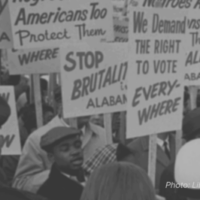It’s been several weeks since the historic law, AB 5, went into effect in California. The law’s passage in 2019 was the culmination of years of advocacy and has provided a spark to other states to consider similar legislation. AB 5 addresses what can seem like a technicality: when is a worker an employee, and when is a worker an independent contractor?
Independence as a concept is great; as a legal classification, far too often it translates to denial of basic workplace rights and protections. For decades, unscrupulous employers have cheated the system and illegally labeled their employees as independent contractors, which allows companies to reap profits while workers and the public bear the cost. California acted decisively by passing AB 5 in 2019 to protect both workers and the employers who play by the rules by properly treating their workers as employees.
From the beginning, Uber has been a vocal critic of the law, and tried just about everything to prevent it from being passed. After failing to stop the law’s passage and further failing to get itself exempted from the law, Uber came out with some impressively inconsistent arguments, saying simultaneously that the law didn’t apply to them and also that they were going to challenge and overturn the law so that it could not apply to them.
The new policies Uber has announced do not change the basics of how Uber exerts control: it sets fares, it takes the commission it wants, and it can take back whatever positive changes it makes when it wants to.
While Uber is not alone in these efforts (the anti-AB 5 chorus includes Lyft, Postmates, Instacart, and Doordash, as well as the usual suspects, such as the Chamber of Commerce and other anti-regulation types), it has been a major force in normalizing and expanding an exploitative business model now emulated even by companies outside what we typically think of as the “gig economy.”
All along, Uber’s premise has been that its legions of drivers are not the company’s employees, but rather are in business for themselves, simply using the Uber app to conduct those independent businesses. Never mind that Uber sets rates, imposes discipline, and holds all the power. One of the company’s main arguments is that as independent contractors, drivers enjoy the flexibility to work when they want. In fact, as part of Uber’s anti-AB 5 campaign, the company implicitly threatened to take away that flexibility if the law passed. There is a major hole in that argument, however: there is nothing inherently preventing employees from having flexibility; if drivers were properly classified as employees and Uber chose to take away what flexibility drivers do enjoy, that is Uber’s decision, not a mandate from the legislature.
Uber’s Tweaks Don’t Fundamentally Change How It Exerts Control Over Drivers
In the last few weeks, we have seen news stories that Uber is making tweaks to its model, in what appears to be an attempt to give the drivers some semblance of independence, but ultimately is really about Uber hoping to make the case that the drivers are not employees.
Some of the changes Uber has announced for drivers in California do seem positive, such as ending some instances of upfront pricing, where driver pay was completely separate from passenger rates, often leaving drivers making pennies on the total fare charged. What’s clear from this is that Uber can make changes that benefit drivers, when pushed from the outside, whether by laws or regulations or by drivers organizing and demanding change. But these tweaks do not alter the fact that, under the standard in AB 5, Uber’s drivers are employees.
One of the major benefits of AB 5 is that it offers a simple test to determine if a worker is an employee or an independent contractor. The presumption is that a worker is an employee, unless the company (or “hiring entity”) can show that (A) the person is free from the control and direction of the hiring entity in connection with the performance of the work, (B) the person performs work that is outside the usual course of the hiring entity’s business, and (C) the person is customarily engaged in an independently established trade, occupation, or business of the same nature as that involved in the work performed.
Uber drivers are certainly employees under this standard, even as Uber tries to make the case that its drivers are free from its control, or that Uber is merely a technology platform. The new policies the company has announced—such as clarifying what fares the drivers will take home, changing how it calculates surge pricing, or giving drivers more information about where they are being asked to drive—do not change the basics of how Uber exerts control: it sets fares, it takes the commission it wants, and it can take back whatever positive changes it makes when it wants to.
Uber should continue making improvements to the driver experience. It should also follow the law, and not try to buy its way out of a law that was defined by the California Supreme Court, passed by both houses of the California legislature, and signed by the governor.




